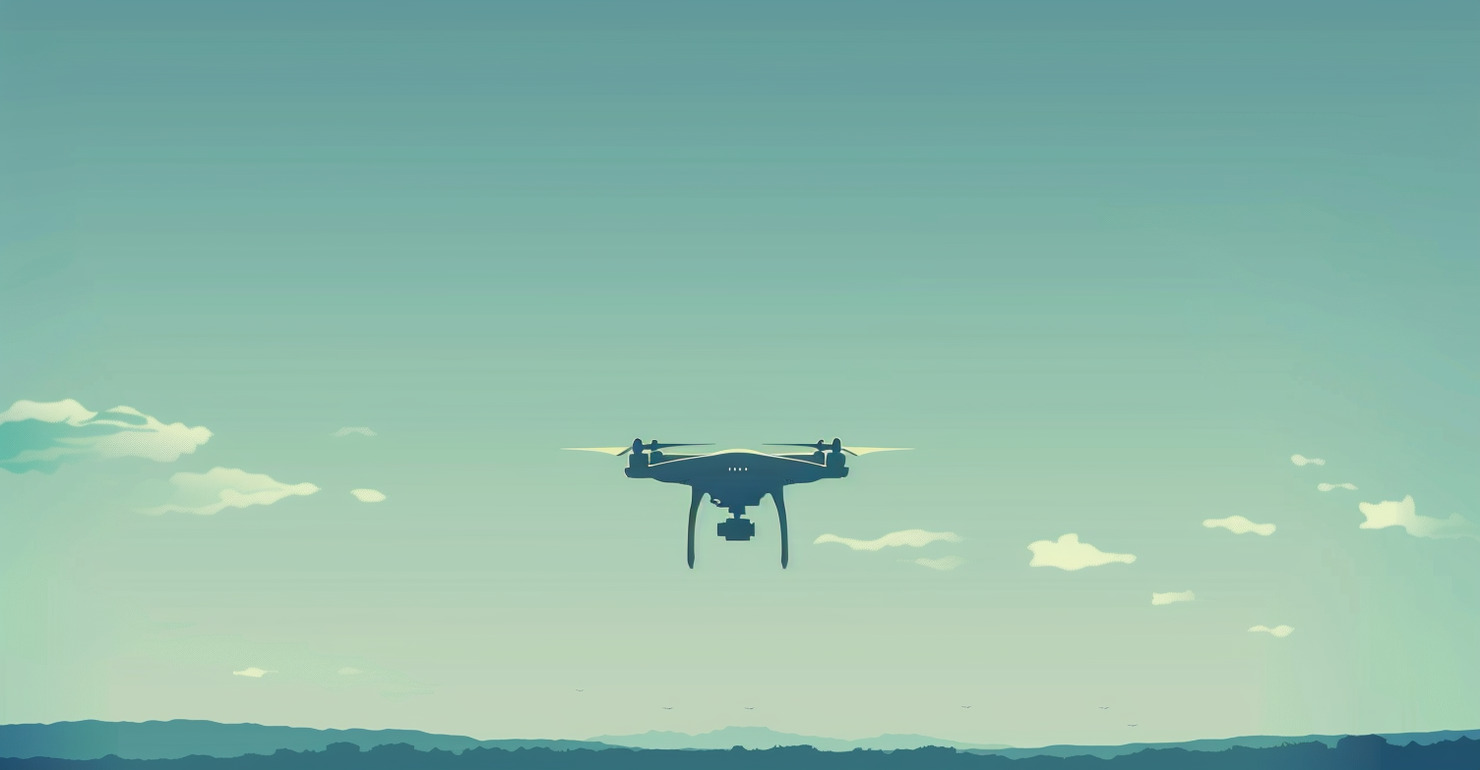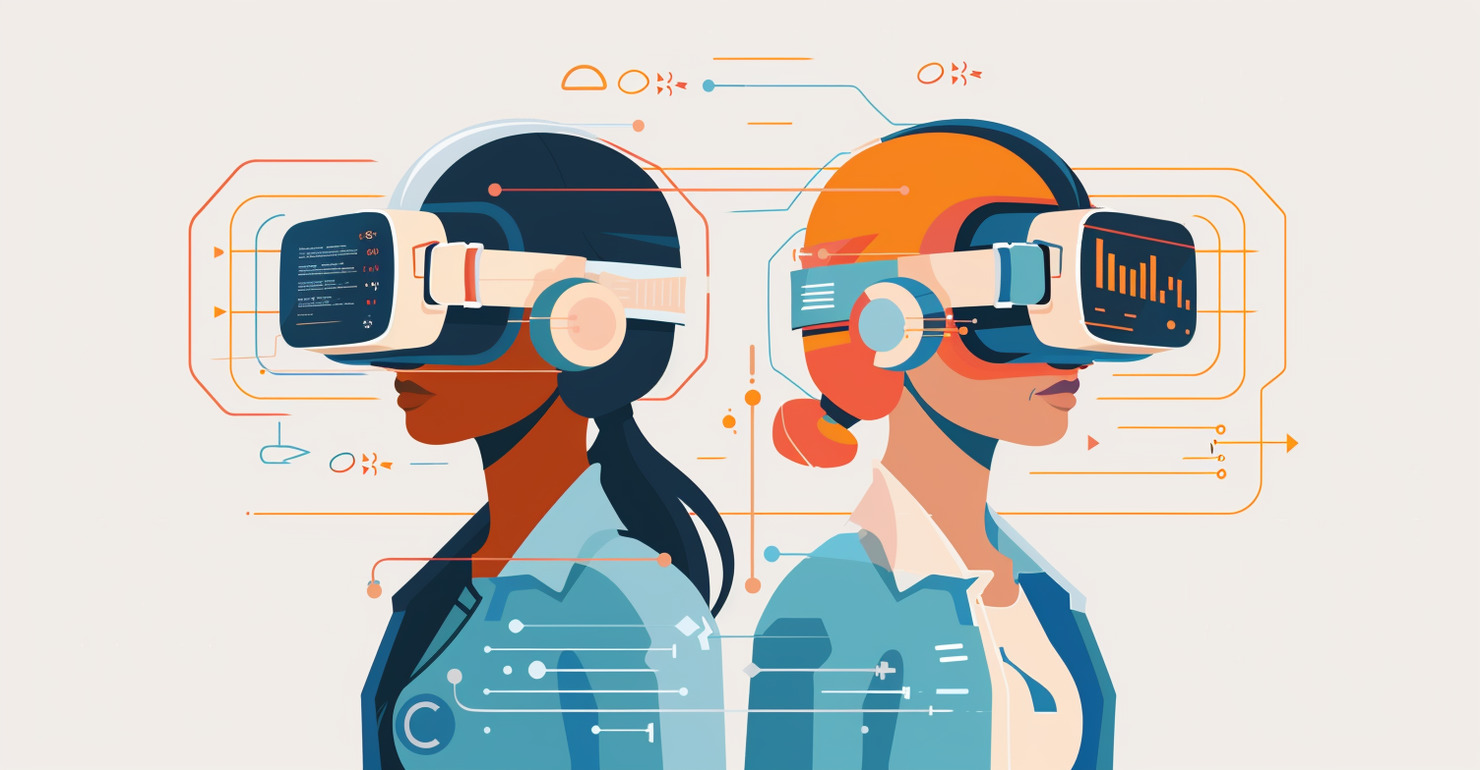
Autonomous Drones: The Next Frontier in Aircraft Inspection
The use of autonomous drones in aircraft inspection represents a significant advancement in the industry. These unmanned aerial vehicles (UAVs) equipped with advanced sensors and cameras have the capability to streamline and automate the inspection process. Traditional aircraft inspections are time-consuming, costly, and subjective. With autonomous drones, inspections can be conducted efficiently, accurately, and at a lower cost.
The deployment of autonomous drones in aircraft inspection has the potential to revolutionize the field. These drones navigate autonomously, scanning the exterior surfaces of aircraft to detect defects such as dents, corrosion, and lightning strikes. By eliminating the need for manual inspections, autonomous drones offer a more objective and reliable assessment of an aircraft’s condition.
Furthermore, the applications of autonomous drones in aircraft inspection are extensive. They can be used for pre-flight and post-flight inspections, routine maintenance tasks, and even non-destructive testing. These drones have the ability to capture detailed images and data, providing invaluable insights to engineers and technicians.
However, the utilization of autonomous drones in aircraft inspection is not without its challenges. Regulatory frameworks need to be established to ensure the safe operation of these drones in airspace. Additionally, concerns regarding privacy and security must be addressed. Collaborative efforts between industry stakeholders, aviation authorities, and drone manufacturers are essential in overcoming these challenges and developing efficient solutions.
In conclusion, the integration of autonomous drones in aircraft inspection represents the next frontier in the industry. This technology offers the potential for improved accuracy, cost-effectiveness, and safety in the maintenance and inspection of aircraft. By leveraging the capabilities of autonomous drones, the aviation industry can enhance its operations and ensure the continued safety of passengers and crew members.
Advancements in Autonomous Drone Technology

The advancements in autonomous drone technology have played a pivotal role in transforming the field of aircraft inspection. These unmanned aerial vehicles (UAVs) have evolved to incorporate sophisticated features and capabilities that enhance their performance and effectiveness.
One key advancement is the development of autonomous navigation systems. These systems enable drones to navigate and maneuver autonomously without the need for direct human control. By utilizing GPS, inertial sensors, and advanced algorithms, autonomous drones can fly pre-programmed routes, avoid obstacles, and maintain stable flight, ensuring accurate and reliable inspections.
Another important advancement is in sensor technology. Modern autonomous drones are equipped with high-resolution cameras, thermal imaging sensors, LiDAR, and other advanced sensors. These sensors enable the drones to capture detailed images, detect anomalies, and measure various parameters such as temperature and structural integrity. This allows for comprehensive inspections of aircraft surfaces and components, ensuring potential issues are identified and addressed promptly.
The integration of artificial intelligence and machine learning algorithms has further enhanced the capabilities of autonomous drones. These algorithms enable the drones to analyze and interpret the data collected during inspections, identifying patterns and anomalies that may not be visible to the naked eye. This advanced analysis assists inspectors and maintenance personnel in making informed decisions regarding repairs and maintenance tasks.
Moreover, advancements in battery technology have significantly improved the flight endurance of autonomous drones. Longer flight times allow for extended inspection periods, reducing the need for frequent recharging or replacing batteries. This ensures efficient and thorough inspections, especially for large aircraft or complex structures.
Additionally, the miniaturization of components and advancements in materials have led to lighter and more compact drone designs. This enables drones to access confined and hard-to-reach areas of an aircraft, providing comprehensive inspections even in challenging environments. The portability and maneuverability of autonomous drones contribute to their versatility and effectiveness in aircraft inspection.
In conclusion, the advancements in autonomous drone technology have revolutionized aircraft inspection by enhancing navigational capabilities, sensor technology, data analysis, flight endurance, and overall drone performance. These innovations have made autonomous drones an invaluable tool in ensuring the safety, efficiency, and reliability of aircraft inspections.
Applications of Autonomous Drones in Aircraft Inspection
The advancements in autonomous drone technology have opened up a wide range of applications for their use in aircraft inspection. These autonomous drones offer numerous benefits and efficiencies in various inspection tasks, including pre- and post-flight inspections, routine maintenance, and fault detection.
One primary application of autonomous drones in aircraft inspection is the ability to conduct visual inspections of the aircraft’s exterior surfaces. Equipped with high-resolution cameras and sensors, these drones can capture detailed images and videos of the aircraft, allowing inspectors to assess its condition without the need for manual inspections. This helps in identifying defects such as dents, corrosion, lightning strikes, and missing parts.
Another valuable application is the use of autonomous drones for inspecting hard-to-reach areas or confined spaces on an aircraft. These areas, which are often difficult for human inspectors to access, can be efficiently examined by autonomous drones due to their compact size and maneuverability. This ensures comprehensive inspections of all parts of the aircraft and improves overall maintenance efficiency.
The use of autonomous drones also enables real-time monitoring of critical systems and components during flight operations. These drones can capture data related to temperature, pressure, vibration, and other parameters, providing insights into the health of the aircraft in real-time. This allows for proactive maintenance and timely identification of any potential issues, ensuring the safety and reliability of the aircraft.
In addition, autonomous drones can play a significant role in non-destructive testing (NDT) of aircraft. By utilizing advanced sensors such as thermographic cameras and electromagnetic scanners, these drones can detect internal defects in the aircraft structure, composite materials, and weld joints. This helps in identifying hidden or hard-to-detect issues that may impact the safety and integrity of the aircraft.
Furthermore, autonomous drones can contribute to the digitization of inspection data and the creation of comprehensive aircraft maintenance records. The captured images and data can be processed and stored digitally, allowing for easy retrieval, analysis, and comparison over time. This digital documentation assists in ensuring compliance with regulatory requirements and facilitates data-driven decision-making in maintenance operations.
In conclusion, the applications of autonomous drones in aircraft inspection are diverse and expansive. From visual inspections to monitoring critical systems and conducting non-destructive testing, these drones offer efficiency, accuracy, and improved safety in the inspection process. With their ability to access hard-to-reach areas and digitize inspection data, autonomous drones are paving the way for enhanced maintenance practices in the aviation industry.
Challenges and Solutions in Autonomous Drone Aircraft Inspection

The integration of autonomous drones in aircraft inspection presents certain challenges that need to be addressed to ensure their safe and effective implementation.
Regulatory challenges are one of the key hurdles in the adoption of autonomous drones for aircraft inspection. The operation of these drones needs to comply with aviation regulations, airspace restrictions, and privacy laws. Establishing clear guidelines and standards for the operation and certification of autonomous drone systems is crucial to ensure their safe integration into the aviation industry.
Safety is another significant concern when deploying autonomous drones for aircraft inspection. These drones need robust obstacle detection and collision avoidance systems to navigate safely in complex environments. Mitigating risks associated with technical failures and ensuring redundancy in critical systems are essential to minimize the chances of accidents or incidents during inspection operations.
Data security and privacy are additional challenges that need careful consideration. Autonomous drones capture a vast amount of data during inspections, which may include sensitive information about the aircraft and its components. Establishing secure data storage and transmission protocols, as well as implementing strict access controls and encryption measures, is vital to safeguard this data from unauthorized access or cyber threats.
Environmental conditions, such as adverse weather and low-light situations, can pose challenges for autonomous drone aircraft inspection. Ensuring that the drones are equipped with appropriate sensors and imaging systems that can operate effectively in different lighting and weather conditions is crucial for accurate and reliable inspections.
One solution to address these challenges is through ongoing collaboration between drone manufacturers, aviation authorities, and industry stakeholders. This collaboration can help formulate and update regulations, develop standardized protocols for drone operation and maintenance, and advance technology innovations that enhance the safety and capabilities of autonomous drone aircraft inspection systems.
Moreover, continuous research and development efforts are essential to improve the autonomy, reliability, and efficiency of these drones. Advancements in artificial intelligence, sensor technology, and battery life can further enhance the capabilities of autonomous drones, making them more reliable and effective in aircraft inspection tasks.
In conclusion, while there are challenges to overcome in the implementation of autonomous drones for aircraft inspection, solutions can be found through collaborative efforts, adherence to regulations, and continuous technological advancements. By addressing these challenges, the aviation industry can harness the full potential of autonomous drone aircraft inspection, improving safety, efficiency, and reliability in maintaining and inspecting aircraft.
Case Studies of Successful Autonomous Drone Aircraft Inspection
Several case studies highlight the successful implementation of autonomous drone aircraft inspection in different industries and contexts.
One notable example is RE2 Robotics’ collaboration with the U.S. Air Force to develop an autonomous aircraft inspection and sustainment system. This system focuses on pre- and post-flight inspections of C-17 aircraft and reduces the need for personnel to work at heights during routine maintenance tasks, ensuring safety and efficiency.
In another case study, researchers developed an approach for aircraft scanning using a UAV equipped with an RGB-D camera. This two-stage process aimed to generate a dense and precise 3D digital model of the target aircraft, enabling comprehensive inspections even when a 3D model is unavailable.
Additionally, the use of autonomous drones in non-destructive testing (NDT) has shown promising results. By integrating advanced sensors and imaging systems, these drones can detect internal defects in aircraft structures and composite materials. This technology enhances the accuracy and efficiency of inspections while reducing the need for manual labor.
An example of successful implementation can be seen in the collaboration between Boeing and Near Earth Autonomy. They tested autonomous drones for routine inspections of aircraft at Joint Base Pearl Harbor-Hickam in Hawaii. The drones captured detailed imagery, enabling quicker and more accurate assessments of corrosion, missing rivets, and other maintenance issues.
Furthermore, the U.S. Air Force has experimented with drones, AI, and cloud collaboration to streamline aircraft inspections. The use of autonomous drones, along with artificial intelligence, has significantly reduced the time required for inspections and improved accuracy compared to human inspectors alone.
These case studies demonstrate the effectiveness and potential of autonomous drone aircraft inspection in various applications, ranging from routine inspections to specialized NDT. The successful integration of these technologies contributes to improved safety, efficiency, and reliability in the maintenance and inspection of aircraft.
Future Implications and Potential of Autonomous Drone Aircraft Inspection
The future implications and potential of autonomous drone aircraft inspection are significant, offering numerous benefits and transformative possibilities for the aviation industry.
Firstly, the implementation of autonomous drone aircraft inspection has the potential to improve safety by reducing human error and minimizing the risks associated with manual inspections. The use of advanced sensors, artificial intelligence, and machine learning algorithms enables these drones to detect defects accurately and identify potential issues in real-time.
Autonomous drones also have the ability to enhance efficiency and cost-effectiveness in aircraft inspection processes. By automating inspections, these drones can significantly reduce the time and resources required for routine maintenance, resulting in improved operational efficiency and reduced downtime for aircraft. The utilization of autonomous drones can also lead to cost savings by eliminating the need for specialized equipment or personnel for certain inspections.
The data collected through autonomous drone aircraft inspections has the potential to be utilized for predictive maintenance. By analyzing the gathered data over time, patterns and trends can be identified, enabling maintenance teams to proactively address potential issues before they escalate. This proactive approach can enhance overall aircraft reliability and reduce unexpected failures or breakdowns.
In addition, autonomous drone aircraft inspections can contribute to digitizing and streamlining maintenance records. The data captured during inspections can be stored digitally, creating a comprehensive and easily accessible repository of information. This digitization improves record-keeping, simplifies regulatory compliance, and enables efficient data analysis for trend monitoring.
Furthermore, as technology continues to advance, the capabilities of autonomous drone aircraft inspection are expected to expand. Developments such as improved sensor technology, longer flight endurance, and enhanced data processing algorithms hold promise for even more accurate and efficient inspections in the future.
However, it is important to address challenges related to regulations, safety, and privacy to unlock the full potential of autonomous drone aircraft inspection. Collaborative efforts among industry stakeholders, regulatory bodies, and technology developers are crucial in establishing standardized guidelines, ensuring safe operations, and protecting sensitive data.
In conclusion, the future of autonomous drone aircraft inspection is promising. With its potential to enhance safety, efficiency, and cost-effectiveness, this technology is poised to revolutionize the way aircraft inspections are conducted. By embracing and further developing autonomous drone technologies, the aviation industry can significantly advance maintenance practices, improve operational performance, and ensure the continued safety and reliability of aircraft.
Conclusion
The integration of autonomous drones in aircraft inspection represents a significant breakthrough in the aviation industry. With advancements in technology, these drones offer numerous advantages, including improved safety, efficiency, and cost-effectiveness in the inspection process.
Through their advanced sensors, navigation systems, and artificial intelligence capabilities, autonomous drones can conduct comprehensive inspections of aircraft surfaces and detect potential defects with high accuracy. They can access hard-to-reach areas, capture detailed images, and collect data in real-time, providing valuable insights for maintenance personnel.
Case studies have demonstrated the success of autonomous drone aircraft inspection in various industries and contexts. From pre- and post-flight inspections to routine maintenance tasks and non-destructive testing, these drones have proven their effectiveness and potential for transforming the inspection process.
However, there are challenges that need to be addressed, ranging from regulations and safety concerns to data security and environmental conditions. Strategic collaborations among industry stakeholders, regulators, and technology developers are necessary to overcome these challenges and ensure the safe and efficient integration of autonomous drones in aircraft inspection operations.
In summary, autonomous drones represent the next frontier in aircraft inspection. With continued advancements in technology and collaboration among industry players, these drones have the potential to revolutionize the maintenance practices in the aviation industry, enhancing safety, efficiency, and overall aircraft reliability.



